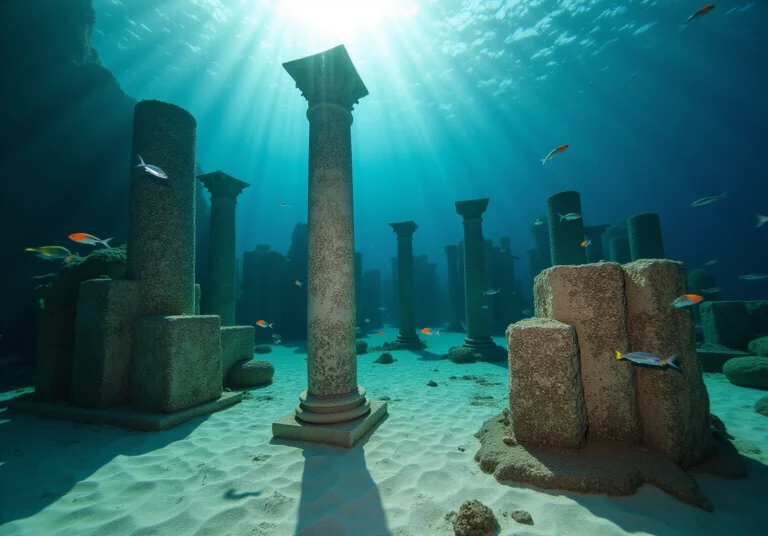Overview
Have you ever wondered about the secrets hidden beneath the waves? This article dives into ten ancient cities that are submerged underwater, revealing their fascinating historical significance and the archaeological treasures that tell their stories. Each city, like Baiae in Italy and Thonis-Heracleion in Egypt, showcases unique remnants and artifacts that offer a glimpse into ancient civilizations. It’s incredible to think about how natural disasters or geological changes led to their submersion, sparking the curiosity of divers and historians alike! So, grab your gear and let’s explore these underwater wonders together!
Key Highlights:
- Baiae, Italy, was a luxurious Roman retreat now submerged, featuring thermal baths and villas, with ongoing archaeological discoveries revealing mosaics and architecture.
- Thonis-Heracleion, Egypt, was a major port city submerged for over a millennium, with excavations uncovering ancient anchors, ships, and artefacts that illuminate its past.
- Port Royal, Jamaica, once a pirate haven, is now submerged, preserving artefacts that reveal its historical significance in British trade and piracy.
- Derwent, England, was intentionally flooded in 1944, with remnants resurfacing during droughts, highlighting its rich history and the impact of environmental changes.
- Villa Epecuén, Argentina, became submerged in 1985, transforming into a ghost town, with only one resident remaining to share its poignant story.
- Pavlopetri, Greece, is a well-preserved ancient city dating back over 5,000 years, showcasing advanced urban planning and ongoing archaeological research.
- Atlit Yam, Israel, is a Neolithic village that reveals insights into early agricultural practises and community living, with structures and human remains found underwater.
- Neapolis, Tunisia, was a Roman city destroyed by a tsunami, with excavations revealing extensive ruins and artefacts related to its role as a trading hub.
- Antirhodos, Egypt, was the site of Cleopatra’s palace, now underwater, with archaeological efforts uncovering artefacts that shed light on her reign.
- The Yonaguni Monument, Japan, is a controversial submerged structure that may be man-made, attracting divers and sparking debate about its origins.
Introduction
Beneath the waves of our oceans, you’ll find remnants of once-thriving civilizations, their stories submerged yet just waiting for you to rediscover them! Picture this:
- From the opulent villas of Baiae
- To the ghostly ruins of Villa Epecuén,
these ancient underwater cities offer a captivating glimpse into human history, art, and culture. As you dive into these submerged landscapes, you encounter not only the echoes of the past but also the challenges of preservation and the mysteries of nature’s power.
What secrets do these underwater realms hold? How might they reshape your understanding of ancient societies? Let’s explore together!
The Design Tourist: Explore the Sunken City of Baiae, Italy
Baiae, once a luxurious retreat for the Roman elite, now lies submerged in the Bay of Naples, offering you a unique glimpse into ancient opulence! Famous for its thermal baths and lavish villas, the remains of this site, known as ancient cities underwater, are still visible, captivating divers and history enthusiasts alike.
Recent archaeological explorations have uncovered stunning mosaics and intricate remnants of Roman architecture, showcasing the artistry of the era. Imagine swimming through these ancient ruins! The underwater archaeological park not only allows you to immerse yourself in the grandeur of ancient Rome but also educates you about the geological phenomena, like bradyseism, that led to the city’s submersion.
In 2025, the park is expected to attract thousands of visitors eager to explore this remarkable site and its rich history. As a testament to its allure, Baiae continues to be a focal point for those seeking authentic cultural experiences beneath the waves. So, are you ready to dive into this adventure and discover the treasures that lie beneath the surface?
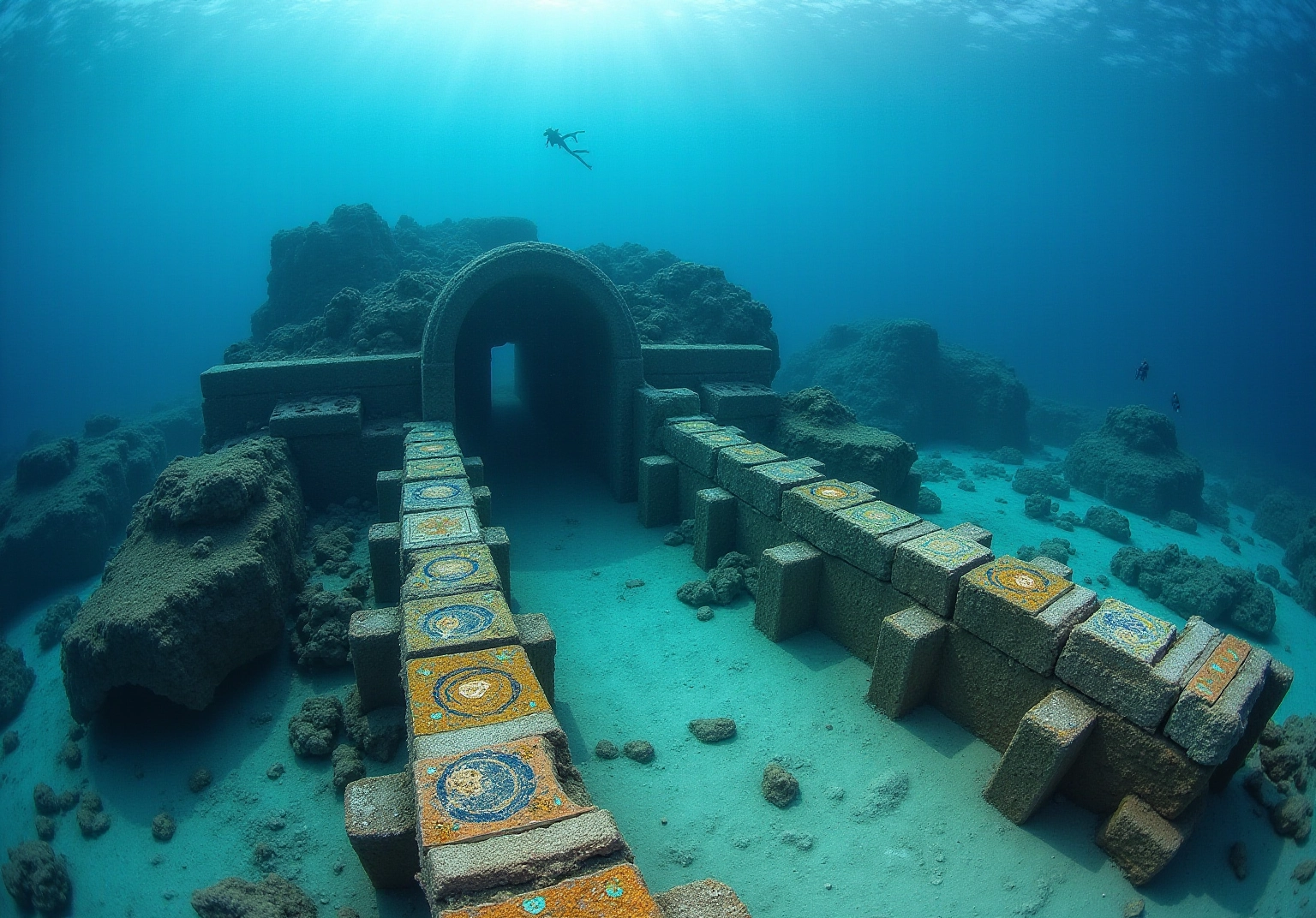
Thonis-Heracleion: The Lost Egyptian City Beneath the Waves
Imagine diving into the depths of history at Thonis-Heracleion, one of the ancient cities underwater that was a once-thriving port city submerged for over a millennium! Rediscovered in the early 2000s, this ancient settlement is considered one of the ancient cities underwater, which was Egypt’s largest port before Alexandria came along. Picture bustling trade, grand temples, and vibrant markets all around you.
Recent underwater excavations have revealed over 700 ancient anchors, the remains of more than 60 ships, gold coins, and a treasure trove of artifacts—like silver ritual instruments and alabaster containers—beautifully preserved beneath a three-meter layer of hard clay. These findings offer a priceless glimpse into urban life and the wealth of its inhabitants, shedding light on how this city, which is now among the ancient cities underwater, flourished before a catastrophic earthquake changed everything in the second century BCE.
Mustafa Waziri, Secretary-General of the Supreme Council of Antiquities, shared, “It is a very important discovery because it reveals how the settlement sank and the kind of life that its inhabitants had once led.” Isn’t that fascinating? Archaeologists have even discovered a burial ground next to a shipwreck, dating back over 2,000 years, hinting at significant ceremonial practices that remained sealed for centuries.
The ongoing research at Thonis-Heracleion, an example of ancient cities underwater, is truly captivating! With advanced sonar technology, researchers are locating ships buried beneath 16 feet of clay and rubble. This exploration continues to illuminate the importance of this destination in the study of ancient history and marine archaeology. So, are you ready to dive into this adventure and uncover the secrets of the past?
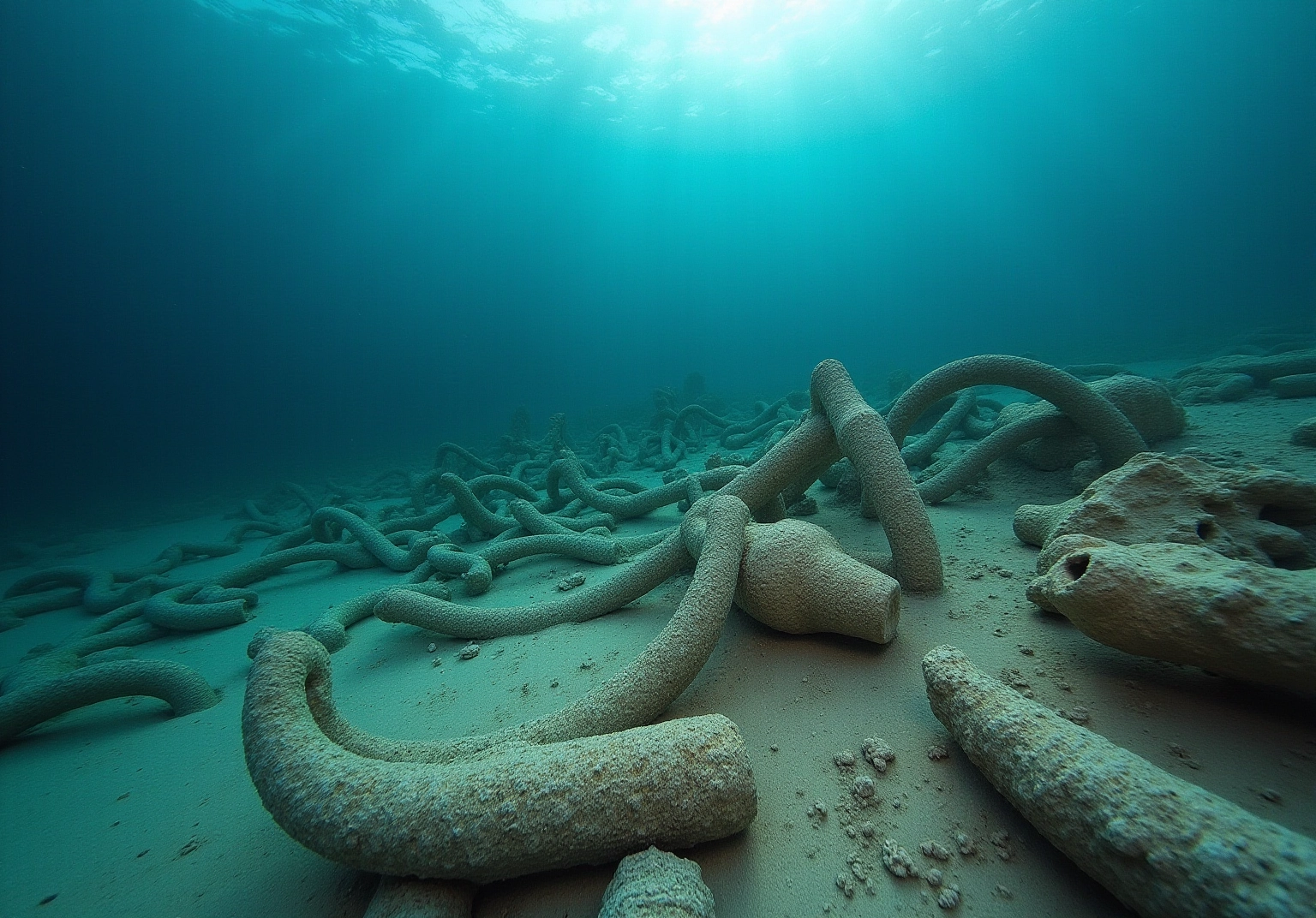
Port Royal, Jamaica: The Pirate City Lost to the Sea
Once dubbed the ‘wickedest city on Earth,’ Port Royal was a bustling pirate haven until a devastating earthquake on June 7, 1692, turned it into one of the ancient cities underwater, submerged beneath the Caribbean Sea. Today, this submerged archaeological location, part of ancient cities underwater, offers you a glimpse into the lives of its former inhabitants through a wealth of artifacts, like cast-iron skillets and pewter plates, preserved in their original context. These findings not only highlight the daily lives of the residents but also underscore Port Royal’s historical significance as a center of British trade in the New World during the 17th century, providing crucial insights into pirate culture and maritime commerce.
Underwater archaeologists are actively mapping the location of ancient cities underwater, which extends about 100 meters into Kingston Bay and covers around six acres. The ongoing research, led by the Institute of Nautical Archaeology, employs innovative multidimensional surveying techniques to uncover the remnants of this notorious settlement. As of 2025, over 2,000 artifacts have been recovered, enriching our understanding of the vibrant yet tumultuous history of piracy in the Caribbean.
However, Port Royal’s integrity is threatened by natural disasters, tourism development, and poor local infrastructure, which pose challenges to preservation efforts. The underwater streets, part of ancient cities underwater, have become a popular diving destination, attracting adventurers eager to explore its submerged history. This location is not only a treasure trove for archaeologists but also functions as an interactive research center, housing the National Museum of Historical Archaeology and the Centre for Archaeological and Conservation Research. With its rich heritage and ongoing exploration efforts, Port Royal stands as a unique testament to the vibrant yet tumultuous history of piracy in the Caribbean.
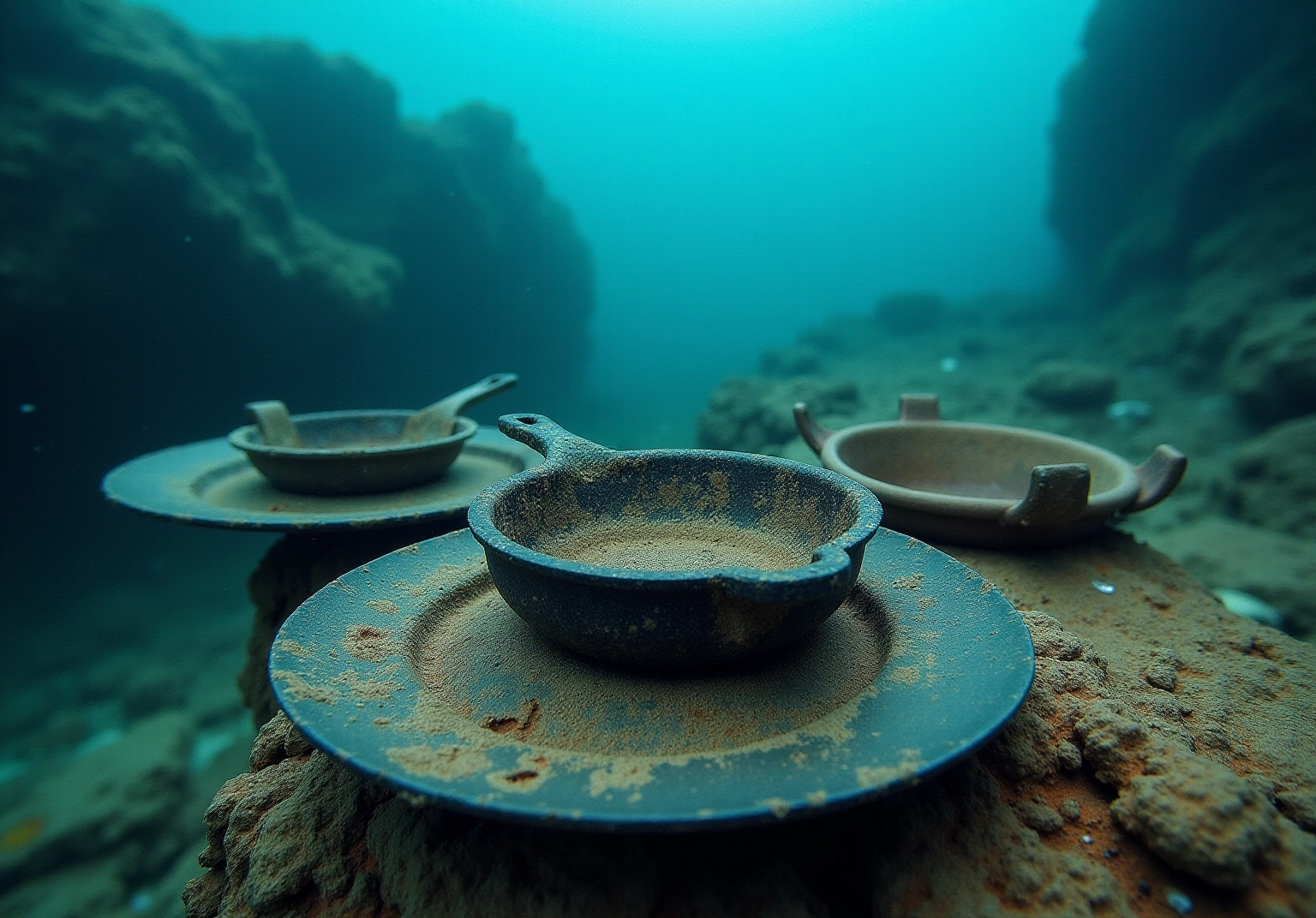
Derwent, England: The Submerged Village with a Story
Derwent, a charming village in Derbyshire, was intentionally flooded in 1944 to create the Ladybower Reservoir, forever changing its landscape. During droughts, the remnants of this once-thriving community, including the iconic church spire, emerge, offering a haunting glimpse into its past, much like ancient cities underwater. This poignant site serves as a reminder of the village’s rich history and highlights the environmental changes that have submerged ancient cities underwater, leading to its disappearance.
As you explore the area, take a moment to contemplate the stories of those who once called Derwent home. It enhances your appreciation for the cultural narratives connected with this sunken village. In 2025, the number of visitors to Derwent during droughts is expected to rise, drawn by the allure of its historical significance and the striking visuals of its resurfaced remains.
Through the lens of travel and design, as emphasized by Karen LeBlanc, every destination tells a story through its local art and culture. Derwent stands as a testament to the stories that shape our understanding of place. So, design enthusiasts, I encourage you to engage with its unique narrative! Explore the area and reflect on the interplay of history and design that characterizes this fascinating village. It’s an adventure waiting to unfold!
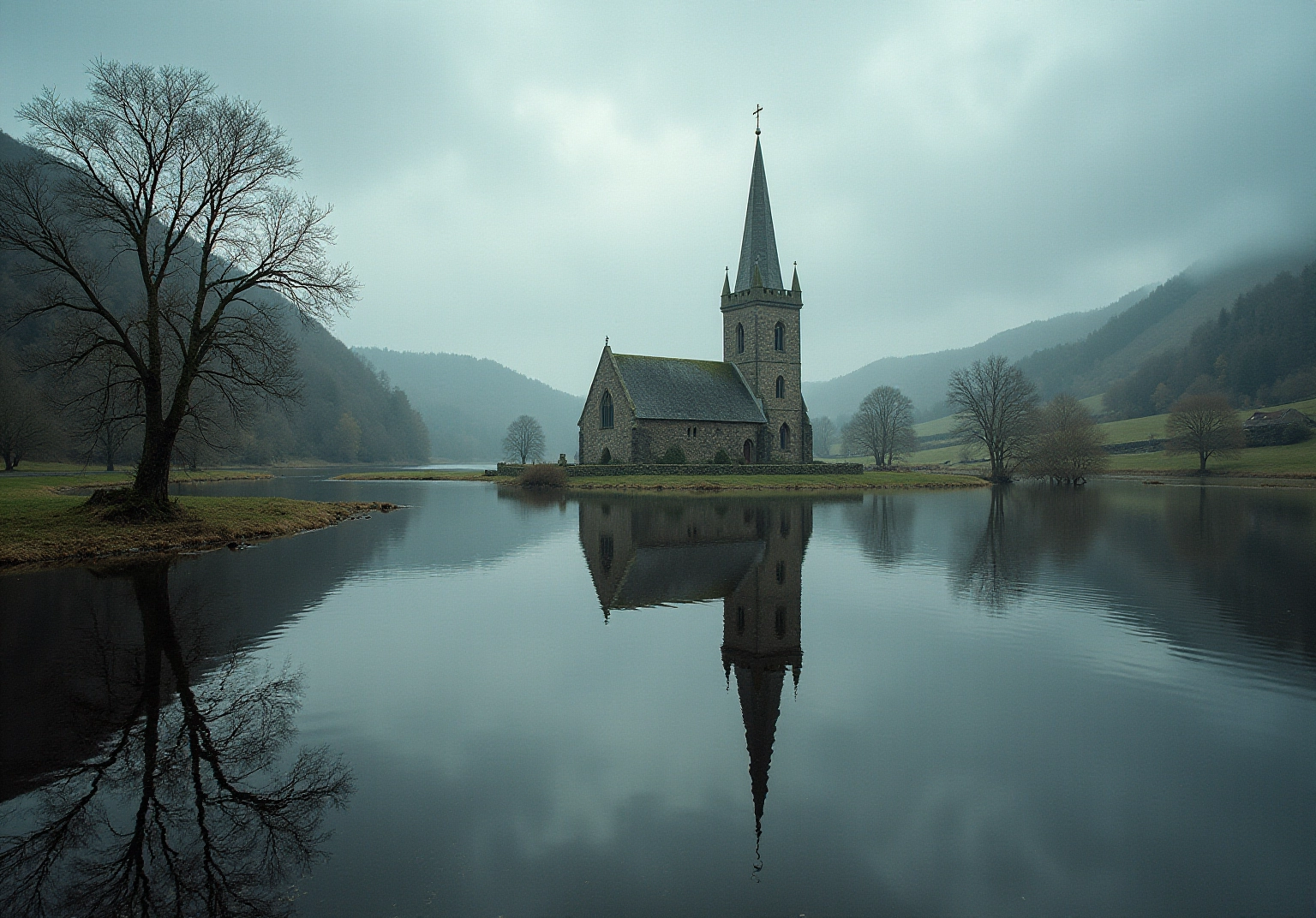
Villa Epecuén, Argentina: The Ghost Town Underwater
Have you ever heard of Villa Epecuén? Once a lively tourist hotspot in Argentina, it became one of the ancient cities underwater after being submerged in 1985 due to a rare and catastrophic flooding event. For nearly 25 years, this town has been one of the ancient cities underwater, transforming into a haunting reminder of its vibrant past. Picture this: at its peak, between the 1950s and 1970s, Villa Epecuén welcomed about 25,000 tourists each year, all drawn in by the lake’s reputed healing properties. But after the flood, the village was left abandoned, resembling ancient cities underwater, with collapsed buildings and rusted cars now draped in a thick layer of salt from the lake water, creating a truly ghostly aesthetic.
In 2009, the waters began to recede, revealing the eerie ruins of ancient cities underwater, which have since attracted a growing number of curious visitors eager to explore its remnants. As of 2025, this location continues to draw inquisitive travelers, many of whom find lodging in nearby Carhué, making it a favored stop for road trips from Buenos Aires to Patagonia. The story of Villa Epecuén is a poignant illustration of nature’s profound impact on human life and the resilience of the community that once thrived there.
Today, only one resident remains—Pablo Novak—embodying the enduring spirit of a place that has seen both prosperity and devastation. As he puts it, “At my age, I simply enjoy life by walking through the ruins of Epecuén, hoping that someone will ask me something… I saw this town be born and I saw it die. It does not affect me anymore.” Additionally, the documentary “Pablo’s Villa” (2013) beautifully highlights the unique story and cultural significance of this ghost town. So, if you’re looking for an extraordinary adventure, Villa Epecuén might just be the perfect destination for you!

Pavlopetri, Greece: The Ancient City That Predates History
Have you ever heard of Pavlopetri? Located off the stunning coast of Greece, this remarkable site is recognized as one of the ancient cities underwater, dating back over 5,000 years! Imagine wandering through well-preserved streets and structures, where you can almost feel the echoes of early urban life. It’s a treasure trove of insights into how people lived long ago.
As you explore Pavlopetri, one of the ancient cities underwater, you’ll notice its fascinating grid-patterned layout, which showcases advanced urban planning. With at least 15 identified structures—including cozy residential neighborhoods and important administrative buildings—this place was once a bustling hub of commerce during the Minoan and Mycenaean cultures. Picture thousands of pottery shards and metal objects that tell the story of a thriving craft sector!
Ongoing excavations are still revealing the city’s importance in ancient trade networks, as well as insights into ancient cities underwater and daily life. It’s no wonder that Pavlopetri is such a captivating destination for history enthusiasts and divers alike! As of 2025, this incredible site remains a focal point for archaeological research, having been included on the World Monuments Watch in 2016. Efforts are underway to preserve its rich heritage while promoting its potential as a tourist attraction.
The hidden remains of Pavlopetri cover an impressive area of over 500,000 square feet, truly emphasizing its historical significance. So, if you’re looking for a unique adventure, consider adding Pavlopetri to your travel plans—you won’t regret it!
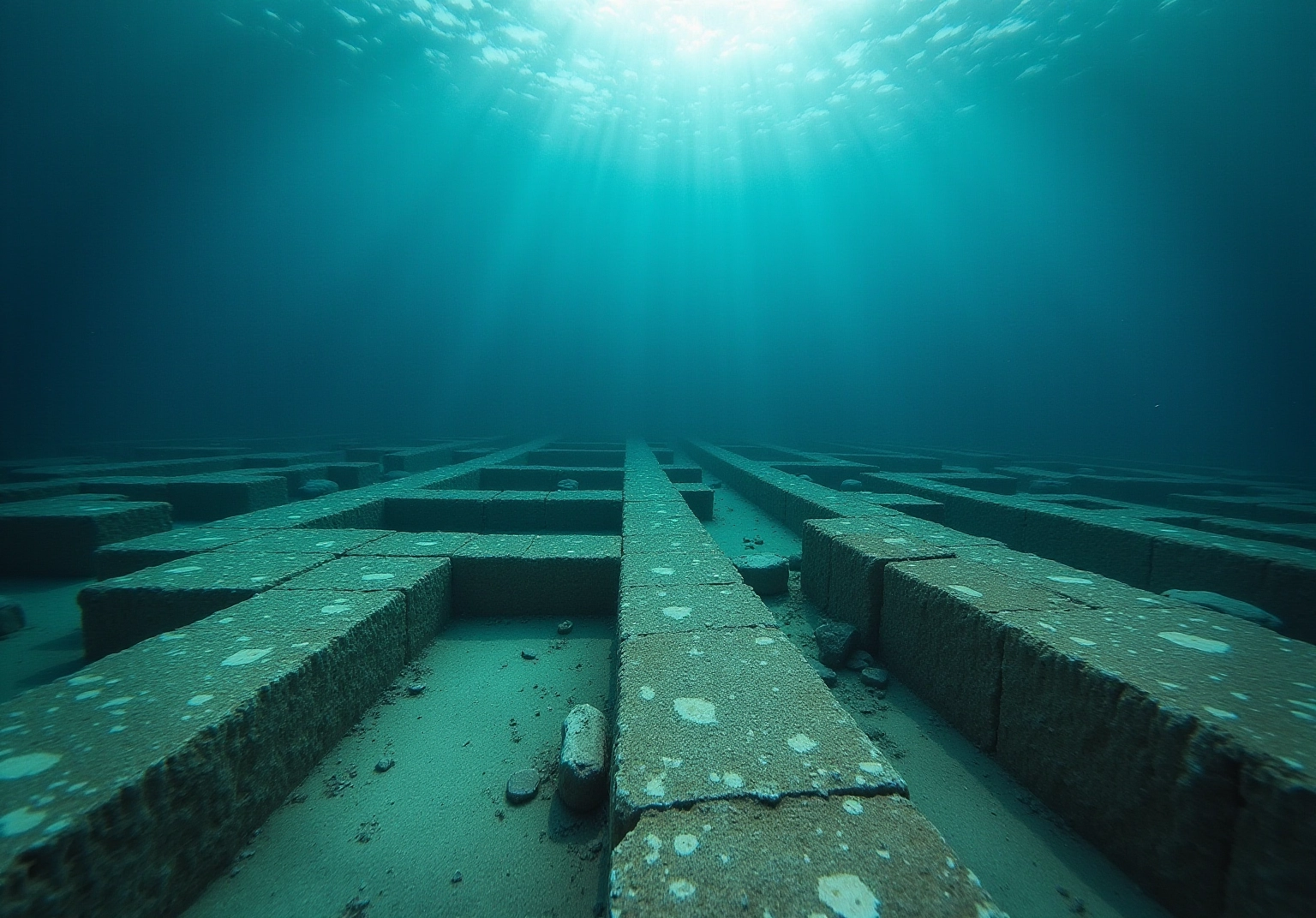
Atlit Yam, Israel: The Neolithic Metropolis Beneath the Waves
Atlit Yam, a fascinating submerged Neolithic village off the coast of Israel, dates back to around 6900 BC! Recent underwater excavations have revealed an incredible array of structures, tools, and even human remains, offering a glimpse into the complexities of early agricultural practices and communal living. Imagine uncovering at least 90 human burials, primarily found near or within residences—what does that say about the social dynamics of its inhabitants, including children and individuals with health issues?
The site features stone-lined water wells, megalithic structures, and evidence of a mixed economy based on farming and fishing. These discoveries provide critical insights into the daily lives and adaptations of these early communities as they navigated their changing environment. Can you believe that the contamination of well water likely led to the abandonment of Atlit Yam? It really highlights the challenges faced by its inhabitants.
As one of the best-preserved prehistoric settlements, covering an impressive area of 6 hectares (15 acres), Atlit Yam is a vital resource for understanding the origins of human civilization. It showcases the innovative strategies our ancestors employed in response to rising sea levels. As archaeologist Ehud Galili puts it, “The site of Atlit-Yam is one of the best preserved ancient cities underwater and most thoroughly investigated underwater prehistoric settlements in the world.” So, what are you waiting for? Dive into the rich history of Atlit Yam and discover the stories that lie beneath the waves!
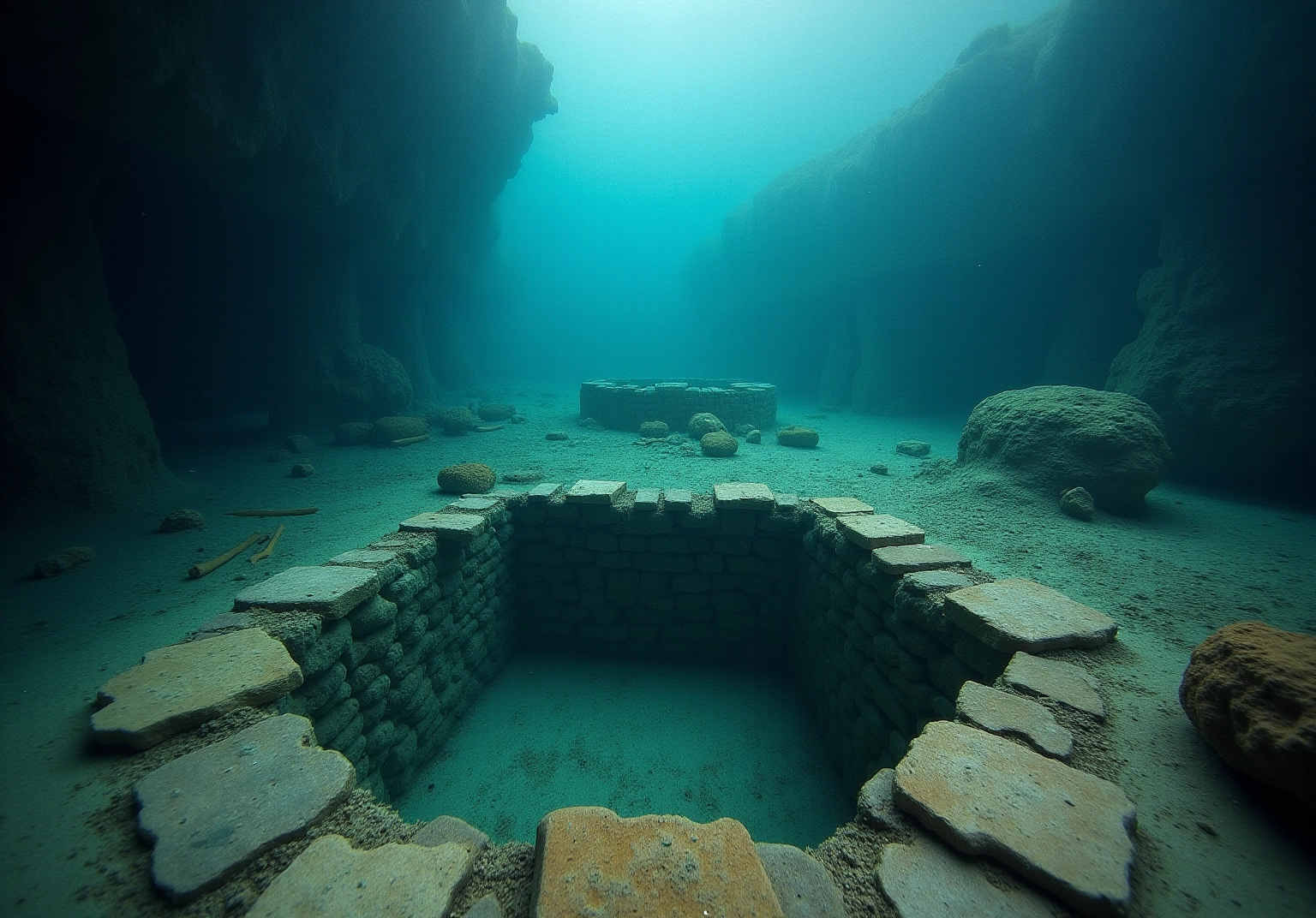
Neapolis, Tunisia: The Roman City Lost to the Sea
Have you ever heard of Neapolis? This ancient Roman city, which is now one of the ancient cities underwater off the coast of Tunisia, met its fate in a devastating tsunami during the 4th century AD. Recent underwater excavations have unveiled extensive ruins that stretch over 20 hectares! Imagine wandering through the remnants of streets and buildings, and spotting around 100 fermentation tanks that were once used to produce garum—a beloved fish-based condiment in ancient Rome.
This site is not just a historical footnote; it highlights Neapolis’s importance as a major trading hub. It’s an exciting opportunity for divers and historians alike to explore the echoes of Roman civilization. The findings shed light on the economic practices of this vibrant metropolis, especially its role as a primary center for the production of garum and salted fish. It supports the idea that Neapolis was partially flooded by the tsunami triggered by a substantial earthquake in 365 C.E., which registered a whopping 8.0 on the Richter scale!
As archaeologists continue to unearth fascinating artifacts, we gain a deeper understanding of Roman North Africa. You’ll discover just how popular garum was in the Roman diet and the cultural narratives that shaped its history. The archaeological search for Neapolis began in 2010, highlighting the ongoing efforts to uncover the rich tapestry of ancient cities underwater. So, are you ready to dive into the past and explore the wonders that await beneath the waves?
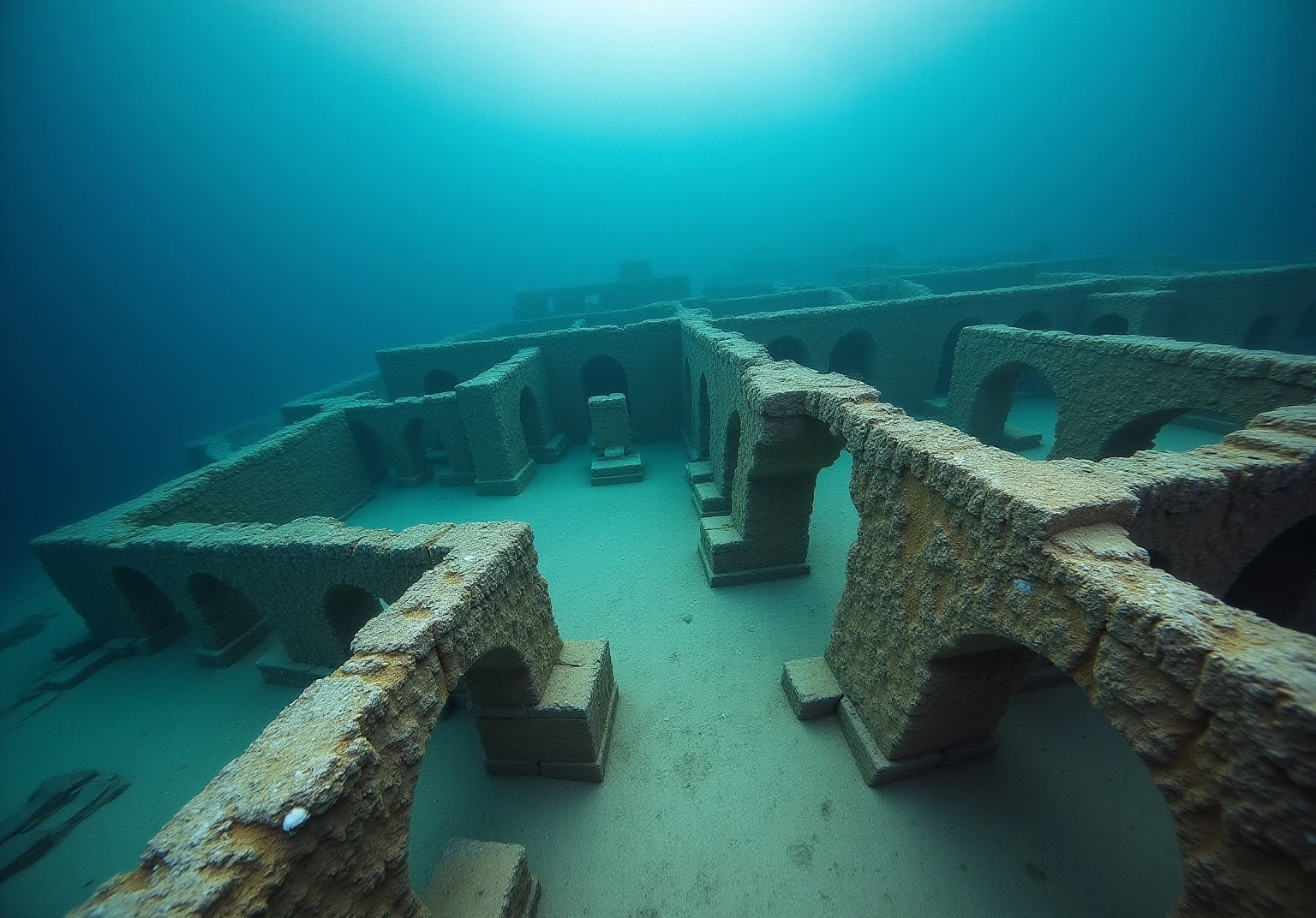
Antirhodos, Egypt: Cleopatra’s Lost Kingdom Underwater
Have you ever dreamed of uncovering the secrets of a lost kingdom? Antirhodos, an enchanting island near Alexandria, was once the magnificent site of Cleopatra’s palace and other splendid structures. Unfortunately, this vibrant locale met a tragic fate when a catastrophic earthquake struck in 365 AD, becoming one of the ancient cities underwater. But don’t worry—recent underwater archaeological efforts have revealed a treasure trove of artifacts and architectural remnants that illuminate the grandeur of the Ptolemaic dynasty!
Imagine this: over 20,000 objects recovered from the depths, showcasing the artistic and cultural richness of this ancient civilization. Experts believe that the sunken remains of Antirhodos and other ancient cities underwater hold the key to understanding Cleopatra’s reign and the fascinating narratives surrounding her life. As explorations continue, including the recent discovery of a partially collapsed temple dedicated to the god Amun, Antirhodos is shaping up to be a captivating destination for those of you drawn to the intersection of history and mythology.
So, are you ready to dive into the mysteries of Cleopatra’s lost kingdom beneath the sea? The adventure awaits, inviting you to uncover stories that have been hidden for centuries!
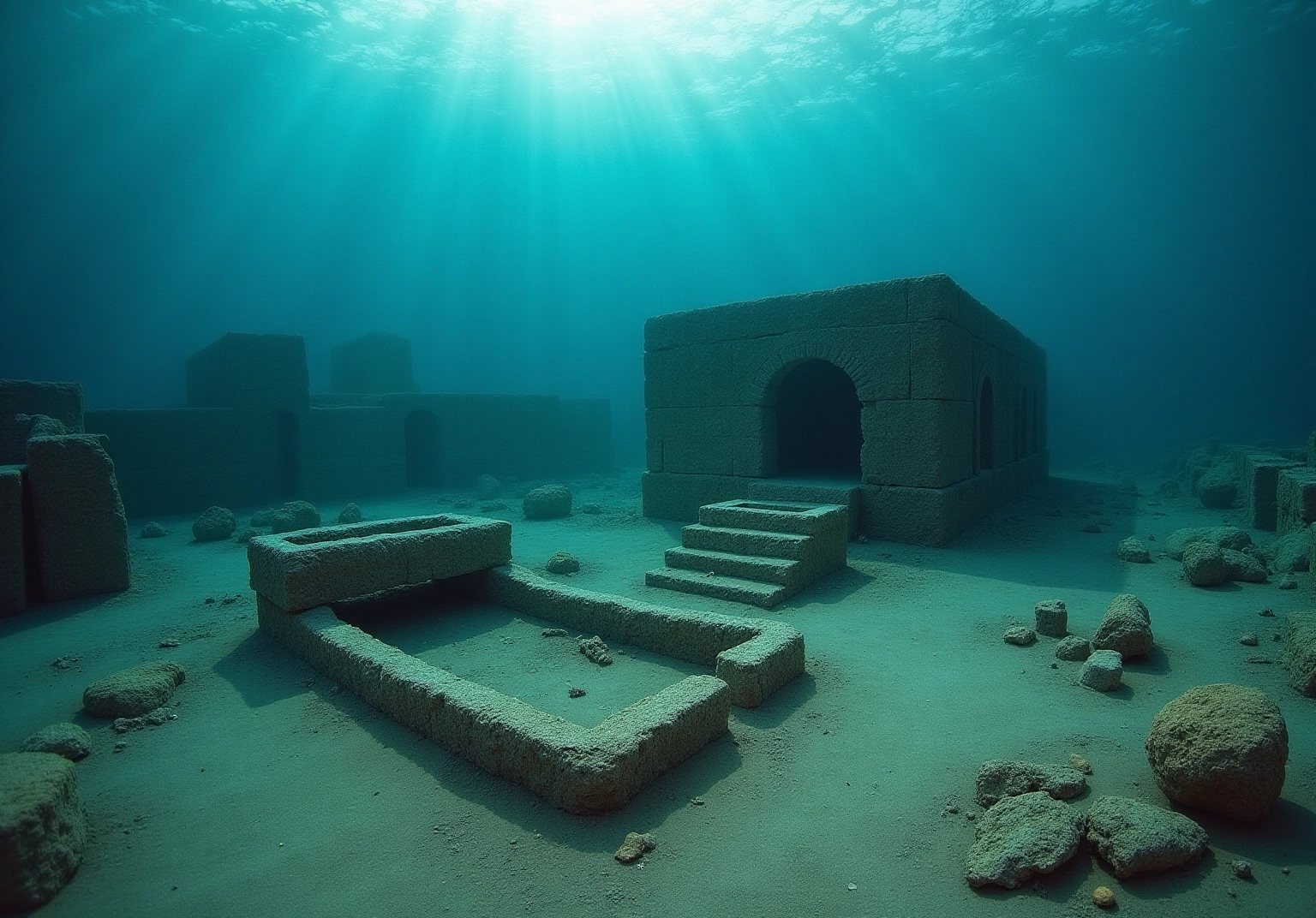
Yonaguni Monument, Japan: The Enigmatic Underwater Structure
The Yonaguni Monument, located off the coast of Japan, is a fascinating submerged rock formation that has sparked plenty of intrigue and debate about its origins! Stretching over 165 feet long and 65 feet wide, this structure boasts terraces and steps that closely resemble man-made constructions. Isn’t that intriguing? Some experts believe it may be remnants of ancient cities underwater that sank due to seismic activity, possibly linked to a massive tsunami in 1771 that tragically claimed 12,000 lives and devastated the region.
Marine biologist Masaaki Kimura is a prominent advocate for the idea that the monument shows signs of human influence. He points out features like quarry marks and carved faces that are hard to ignore! On the flip side, geologists like Robert Schoch argue that these formations are the result of natural geological processes, shaped by weathering and erosion in an earthquake-prone area. This ongoing debate adds to the monument’s enigmatic status, captivating divers and researchers alike.
As of 2025, the Yonaguni Monument continues to draw a significant number of divers, allured by its mysterious charm and the chance to uncover the secrets of a lost civilization. The underwater formations, believed to be remnants of ancient cities underwater that are at least 5,000 years old, include pyramid-like structures connected by roads, resembling a complex cityscape. How cool is that? The largest structure of the Yonaguni Monument rises from a depth of 25 meters (82 feet), making it even more impressive!
The sea off Yonaguni is especially popular for diving during the winter months, thanks to a large population of hammerhead sharks, which makes it a sought-after destination for divers, including the notable freediver Jacques Mayol. Whether you see it as a testament to human ingenuity or a natural wonder, the Yonaguni Monument remains a captivating subject for exploration and discovery! Interestingly, the Japanese government has yet to recognize the monument as a significant cultural property, which only emphasizes the ongoing debate surrounding its origins.
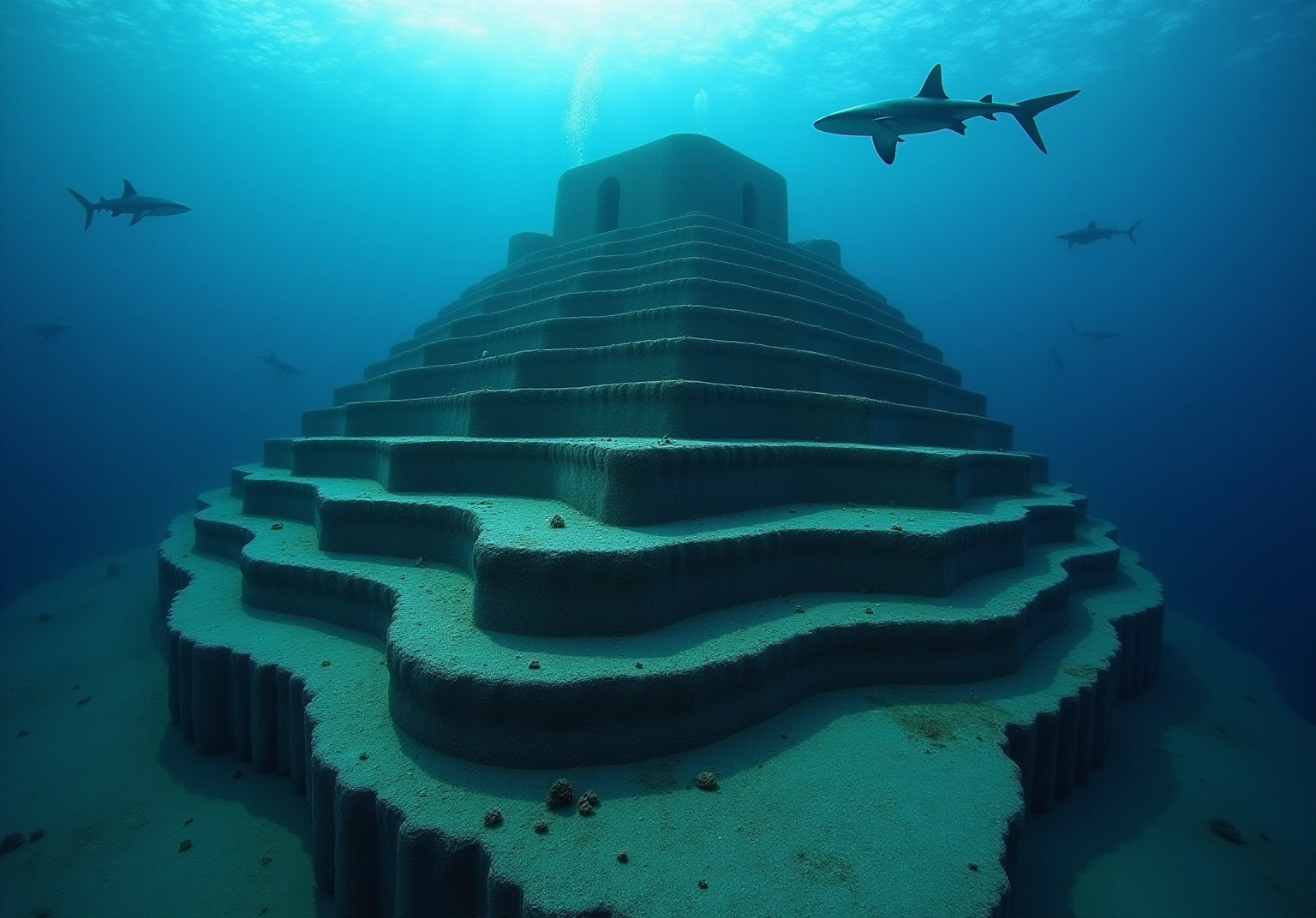
Conclusion
Exploring ancient cities underwater reveals a captivating narrative of human civilization intertwined with the mysteries of nature! Each submerged site, from the luxurious ruins of Baiae in Italy to the enigmatic Yonaguni Monument in Japan, offers a unique window into past cultures and their eventual fates. By diving into these historical treasures, you can connect with the stories of those who once thrived in these now-hidden realms.
The article highlights ten remarkable underwater cities, each with its own rich history and archaeological significance. From the bustling trade of Thonis-Heracleion to the ghostly remains of Villa Epecuén, these locations serve as reminders of the resilience and vulnerability of human societies. They underscore the importance of ongoing research and preservation efforts, ensuring that these legacies are not lost to time.
As interest in underwater exploration grows, so does the opportunity to learn from these submerged sites! They invite not only divers and historians but also curious travelers like you to engage with the past and reflect on the environmental changes that have shaped our world. Whether you’re planning a dive into the depths of history or simply seeking to understand the narratives behind these ancient cities, the allure of the underwater realm continues to inspire exploration and discovery.
Frequently Asked Questions
What is Baiae and why is it significant?
Baiae was a luxurious retreat for the Roman elite that now lies submerged in the Bay of Naples. It is significant for its thermal baths and lavish villas, offering a unique glimpse into ancient Roman opulence.
What can visitors see at the underwater archaeological park in Baiae?
Visitors can see stunning mosaics and remnants of Roman architecture, as well as learn about geological phenomena like bradyseism that led to the city’s submersion.
When is the underwater archaeological park in Baiae expected to attract visitors?
The park is expected to attract thousands of visitors in 2025.
What was Thonis-Heracleion and what has been discovered there?
Thonis-Heracleion was a once-thriving port city in Egypt that was submerged for over a millennium. Recent excavations have revealed over 700 ancient anchors, remains of more than 60 ships, gold coins, and various artifacts, providing insights into urban life and wealth in ancient times.
What does the discovery of Thonis-Heracleion reveal about its past?
The discoveries reveal how the settlement sank and the lifestyle of its inhabitants before a catastrophic earthquake in the second century BCE.
What ongoing research is being conducted at Thonis-Heracleion?
Researchers are using advanced sonar technology to locate ships buried beneath layers of clay and rubble, continuing to shed light on ancient history and marine archaeology.
What was Port Royal known for before its submersion?
Port Royal was known as the ‘wickedest city on Earth’ and was a bustling pirate haven until a devastating earthquake in 1692 submerged it beneath the Caribbean Sea.
What artifacts have been recovered from Port Royal, and what do they signify?
Artifacts like cast-iron skillets and pewter plates have been recovered, highlighting the daily lives of the residents and the historical significance of Port Royal as a center of British trade in the 17th century.
What challenges does Port Royal face in terms of preservation?
Port Royal’s integrity is threatened by natural disasters, tourism development, and poor local infrastructure, which pose challenges to preservation efforts.
What role does Port Royal play in archaeological research?
Port Royal functions as an interactive research center, housing the National Museum of Historical Archaeology and the Centre for Archaeological and Conservation Research, while also being a popular diving destination for those interested in its submerged history.









